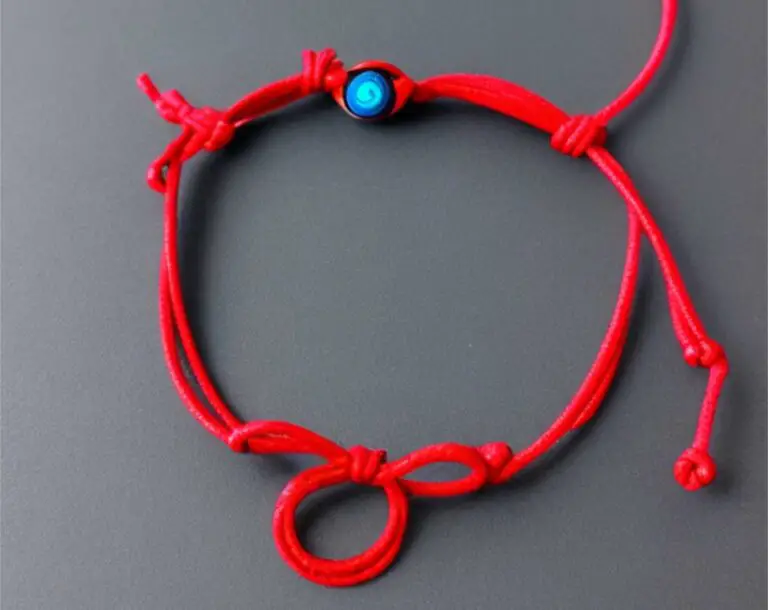What Religions Can Wear the Evil Eye: Accepted in Judaism, Islam, Christianity!

Evil Eye: The belief in harm caused by envy.
Religions: Christianity, Islam, and Judaism.
Protective Measures: Amulets, prayers, and symbols.
Cultural Traditions: Practices to counteract the evil eye.
Envy and Negativity: The root of this superstition.
What Religions Can Wear the Evil Eye: Accepted in Judaism, Islam, Christianity! Vedio…
Introduction
Have you ever had that uneasy feeling when someone looks at you with envy and suddenly things start going wrong in your life? Well, you’re not alone.
Throughout history, many cultures have believed in the existence of a malevolent gaze known as the evil eye. The concept of the evil eye is deeply rooted in superstition and folklore, crossing continents and spanning centuries.
The Evil Eye Concept: A Closer Look
At its core, the evil eye is believed to be a glance or stare that has the power to bring misfortune or harm upon others. This supernatural concept suggests that certain individuals possess an innate ability to cast a curse simply through their gaze. Whether intentional or unintentional, this maleficent look can inflict illness, accidents, or general bad luck upon its unsuspecting victims.
The belief in the evil eye has captivated countless civilizations throughout time, leading to various interpretations and practices across different religions. Today we’ll explore three major religions—Judaism, Islam, and Christianity—that accept and acknowledge the existence of this intriguing phenomenon.
Religions Accepting the Evil Eye Belief
It may come as no surprise that Judaism—one of the world’s oldest religions—acknowledges and addresses the evil eye within its teachings. Deeply ingrained in Jewish folklore and superstition, this belief plays a significant role within Jewish communities worldwide. Similarly, within Islamic traditions, there exists a concept known as “Al-‘Ayn,” which translates to “the evil eye.” It holds an important place in Islamic belief systems and is recognized as a potential source of harm if left unaddressed.
What may raise eyebrows for some is discovering that even Christianity—often associated with more mainstream beliefs—has aspects accepting the notion of an evil eye. Although less widely known, certain branches of Christianity acknowledge the potential effects of this malevolent gaze and even incorporate protective measures against it.
So, hold onto your amulets and talismans as we delve into the intriguing and sometimes mystifying world of religions that accept the existence and influence of the evil eye. From rituals to prayers and ancient traditions, these faiths provide fascinating insights into how people have sought protection from this enigmatic force throughout history.
Judaism and the Evil Eye
Historical roots of the evil eye in Jewish tradition
In the vast tapestry of Jewish tradition, the concept of the evil eye finds its roots deep within history. Dating back to biblical times, this belief has intertwined itself with Jewish culture and folklore.
It is said that even in ancient times, people recognized the power of envy and its ability to bring about misfortune. The idea of an evil eye casting a malevolent gaze upon others has persisted throughout generations, becoming an integral part of Jewish identity.
The significance of the evil eye in Jewish folklore and superstition
Jewish folklore is replete with tales that emphasize the significance attached to the evil eye. Legends abound, recounting instances where individuals were believed to have fallen victim to its curse. Stories tell of crops failing, livestock perishing, and even personal tragedies occurring as a result of an envious glance directed towards unsuspecting individuals.
This belief becomes deeply ingrained within Jewish communities, shaping their worldview and influencing their behaviors. One popular aspect connected to this superstition is “ayin hara,” which translates as “the evil eye” in Yiddish.
This term encapsulates not only a sense of fear but also serves as a precautionary warning against drawing attention or boasting too much about one’s good fortune. The potential for attracting envy through excessive displays of wealth or success hangs over individuals like an invisible cloud.
Protective measures against the evil eye in Judaism
Judaism offers various protective measures against the perceived malevolence of the evil eye. One widely-known talisman is called “Hamsa,” derived from Arabic culture but embraced by Jews as well. The Hamsa hand depicts an open hand with an eye at its center – a symbol believed to ward off negative energy brought on by envy.
Many individuals wear Hamsa pendants or hang them in their homes as a form of protection. Additionally, the Jewish faith places great emphasis on prayer and blessings as means to guard against the evil eye.
Special prayers, such as the “Birkat Kohanim” (Priestly Blessing), are recited by Kohanim (descendants of Aaron) during certain religious ceremonies, invoking divine protection for the people. Similarly, parents often recite a prayer called “Shema” over their children before they go to sleep, seeking divine safeguarding from harmful influences.
The historical roots of the evil eye in Jewish tradition run deep. It has become an inseparable aspect of Jewish folklore and superstition, with stories warning against its potential consequences.
However, Judaism also offers various protective measures against it: from talismans like the Hamsa hand to prayers and blessings seeking divine intervention. These practices reflect not only a belief in supernatural forces but also serve as a reminder to be modest and cautious about one’s good fortune in order to ward off envy’s detrimental effects.
The Concept of “Al-‘Ayn” (the evil eye) in Islamic Teachings
In Islamic teachings, the evil eye is referred to as “Al-‘Ayn.” It is believed to be a real and potent phenomenon that can cause harm or misfortune to individuals. The concept of the evil eye is deeply rooted in Islamic culture and has been mentioned in various hadiths (sayings of Prophet Muhammad) and scholarly texts. Muslims believe that certain individuals possess an envious gaze, which, when directed with ill intentions towards someone, can bring about negative consequences.
According to Islamic teachings, the evil eye can occur unintentionally or intentionally. Unintentional cases often arise from admiring or praising someone excessively without seeking God’s blessings for them.
On the other hand, intentional cases involve people deliberately casting harmful glances or expressing envy toward others’ possessions, success, or well-being. Muslims are encouraged to avoid jealousy and envy and instead cultivate gratitude and contentment.
Beliefs Surrounding the Effects and Remedies of the Evil Eye in Islam
In Islam, it is believed that the evil eye has various effects on its victims. These effects range from physical sicknesses, financial difficulties, and relationship problems, to general misfortunes.
However, Muslims also firmly believe that God’s protection is all-encompassing and ultimate; therefore, they rely on His mercy and guidance to counteract any negative impacts of the evil eye. To combat the influence of the evil eye, Muslims employ different remedies based on their faith’s teachings.
One commonly practiced method is reciting specific verses from the Quran as a form of protection known as Ruqyah. Recitation includes Surah Al-Falaq (Chapter 113) and Surah An-Nas (Chapter 114), which are believed to have powerful protective qualities against harmful energies.
Quranic Verses Related to Protection from the Evil Eye
The Quran, the holy book of Islam, offers guidance and remedies for believers seeking protection from the evil eye. Surah Al-Falaq (Chapter 113) begins with seeking refuge in God from the evil of everything He created, illustrating the comprehensive nature of Divine protection. This chapter is recited as a shield against all forms of harm, including the evil eye.
Similarly, Surah An-Nas (Chapter 114) emphasizes seeking refuge in God from the whispers and envious glances of those who practice witchcraft or sorcery. Muslims believe that reciting this chapter strengthens their spiritual defenses against negative energies and safeguards them from harm caused by the evil eye.
In Islam, believers are encouraged to place their trust in God’s protection while remaining vigilant about avoiding jealousy and envy. By seeking refuge in God through prayer and recitation of Quranic verses specifically related to protection from the evil eye, Muslims aim to keep themselves shielded from its potential harm.

Christianity and the Evil Eye
Lesser-known acceptance of the belief in the evil eye within Christianity
While it may come as a surprise to many, there exists a lesser-known acceptance of the belief in the evil eye within certain branches of Christianity. Although not as widely discussed or acknowledged as in other religions, such as Judaism or Islam, some Christian communities do recognize its existence.
This acceptance often varies depending on cultural practices and specific beliefs held within different regions. Within Christianity, particularly in Mediterranean countries where superstitions have thrived for centuries, there are instances where people believe in the power of the evil eye.
These beliefs often intertwine with local folklore and customs. For instance, in certain Greek Orthodox communities, it is not uncommon to find individuals who wear amulets or charms featuring symbols meant to ward off the evil eye.
The influence of cultural practices on Christian views towards the evil eye
The influence of cultural practices cannot be understated when examining Christian views towards the evil eye. In regions where ancient pagan traditions merged with Christianity during its early spread, remnants of those customs can still be found today. This blend often resulted in a unique interpretation of supernatural phenomena like the evil eye.
In some cultures influenced by Catholicism, particularly those with strong ties to Latin America or Southern Europe, you may encounter beliefs surrounding “mal de ojo” or “mau olhado.” These terms translate to “evil eye” and reflect a prevalent belief that envy or ill wishes can cause harm to others. Consequently, many individuals from these backgrounds adhere to protective rituals such as carrying religious symbols like crosses or displaying images of saints around their homes.
Moreover, one must also consider that during its expansion across various continents throughout history, Christianity absorbed and assimilated local customs and practices into its doctrines. As a result, regional variations exist regarding beliefs about supernatural phenomena.
As Christianity interacted with diverse cultures, the perception and acceptance of the evil eye were inevitably shaped by these interactions. While not universally acknowledged, the belief in the evil eye does have a presence within certain branches of Christianity.
The influence of cultural practices, particularly in regions where ancient customs merged with Christian beliefs, has played a significant role in shaping these views. It is important to recognize and respect these diverse interpretations as we delve deeper into understanding supernatural beliefs across different religions.
Commonalities and Differences among Religions
Similarities between religious interpretations of the evil eye
When delving into the beliefs surrounding the evil eye across different religions, one cannot help but notice some intriguing similarities. Firstly, there is a shared emphasis on protection against negative energy or envy.
In Judaism, Islam, and Christianity alike, followers believe that the malevolent gaze of others can cause harm or misfortune. This notion stems from the belief that certain individuals possess an innate power to cast harm upon others through their envious or covetous thoughts.
Rituals or talismans used across different faiths
Another fascinating similarity lies in the employment of rituals and talismans across different faiths to ward off the evil eye’s effects. In all three religions under discussion, believers utilize objects believed to possess protective qualities.
These can range from amulets and charms in Judaism and Islam to crosses and medals in Christianity. For example, Jews often wear a hamsa—a hand-shaped symbol—believed to offer protection against negative energy.
In Islamic tradition, wearing a nazar (an eye-shaped amulet) is commonly practiced as a means of deflecting the malevolent gaze. Similarly, Christians may carry religious medals embossed with saints believed to intercede on their behalf against harmful influences.
Unique perspectives on how to ward off or counteract its effects
While there are striking resemblances between religions regarding their interpretations of the evil eye concept and their use of protective talismans, each faith also offers distinctive approaches when it comes to warding off or counteracting its effects. Within Judaism, for instance, practitioners might recite specific prayers such as Psalm 121 or employ rituals like spitting three times for protection.
In contrast, Islam places great emphasis on seeking refuge in Allah through various supplications, including recitation of Quranic verses. Christians, on the other hand, may resort to praying for protection and guidance from God while invoking the divine intercession of saints associated with warding off evil.
Distinctive prayers, symbols, or rituals associated with each religion
In addition to unique perspectives on warding off the evil eye, each religion possesses its own set of distinctive prayers, symbols, or rituals linked to this belief. For instance, followers of Judaism may perform the ritual of “Birkat HaMazon,” a grace recited after meals that includes a passage aimed at averting harm from the evil eye. In Islam, individuals might engage in the practice known as ruqyah—a form of spiritual healing involving specific prayers and invocations seeking protection against supernatural afflictions like the evil eye.
Christians have their own set of prayers associated with protection against malevolent influences and often turn to holy water or blessed oils for rituals involving anointing oneself or objects. Though there are shared aspects between religions when it comes to defending against the evil eye’s influence, these distinctive practices add depth and richness to each faith’s relationship with this supernatural phenomenon.
By exploring both commonalities and differences among religions regarding their beliefs about the evil eye and approaches to protection against it, we gain a deeper understanding of how these diverse faiths address similar concerns about negative energy and envy. Ultimately, this provides us with insight into how various cultural and religious contexts shape human responses to forces beyond our comprehension.
Conclusion
A Recapitulation of Key Points Discussed Across Religions
Throughout this comprehensive exploration into the acceptance of the evil eye in Judaism, Islam, and Christianity, we have discovered intriguing similarities and differences among these diverse religious traditions. Starting with Judaism, we learned about its historical roots and the deep significance placed on protecting oneself from the malevolent effects of the evil eye.
Jewish folklore and superstition have given rise to various rituals and talismans as safeguards against this supernatural phenomenon. Moving on to Islam, we uncovered the concept of “Al-‘Ayn,” which refers to the evil eye in Islamic teachings.
Believers in Islam acknowledge its existence and embrace specific beliefs surrounding its effects and remedies. Quranic verses offer solace and guidance for those seeking protection from its malefic influence.
Surprisingly, Christianity also demonstrates acceptance of the belief in the evil eye, albeit not as widely known. Cultural practices have influenced Christian views towards this supernatural phenomenon, leading to some pockets within Christianity that acknowledge its existence.
Appreciation for Diverse Religious Beliefs Regarding Supernatural Phenomena like “The Evil Eye”
It is truly remarkable how different religions interpret and address supernatural phenomena such as “the Evil Eye” with their unique perspectives. Rather than focusing solely on doctrinal differences or disparities, let us appreciate the richness that diverse religious beliefs bring to our understanding of such phenomena. Each tradition offers a distinct lens through which we can view this mysterious aspect of human experience.
By embracing these varied perspectives, we gain a deeper appreciation for both our own religious traditions and those different from our own. It reminds us that spirituality is a vast landscape with many paths worth exploring.
The existence of commonalities between religions regarding protective measures against negative energy or envy shows that humanity shares a collective desire for well-being and harmony. Investigating how Judaism, Islam, and Christianity address the evil eye has allowed us to glimpse into the multifaceted tapestry of religious beliefs.
Our exploration has unveiled a shared human longing for protection from malevolent forces and a recognition that supernatural phenomena like the evil eye can play a role in our lives. Let us embrace this diversity with open-mindedness and foster understanding, knowing that these beliefs are deeply rooted in centuries of tradition and faith.
Frequently Asked Questions
Frequently Asked Questions
1. Can anyone wear the evil eye jewelry, regardless of their religious beliefs? Absolutely!
The belief in the evil eye and the practice of wearing evil eye jewelry is not limited to any specific religion. While it is commonly associated with Judaism, Islam, and Christianity, people from diverse backgrounds and beliefs can wear the evil eye as a form of protection against negative energy.
In fact, you’ll find a wide range of individuals from different cultures across continents sporting this ancient symbol.
2. What does the evil eye symbolize in different religions?
In Judaism, the concept of the evil eye is deeply rooted. It is believed that envy or jealousy can cause harm to oneself or others, and wearing an evil eye amulet or charm helps ward off this negative energy.
Similarly, in Islam, there are prayers and recitations known as duas specifically designed to protect against the evil eye. These practices highlight the significance of safeguarding oneself from envy and ill-wishing.
On the other hand, Christianity approaches the idea of the evil eye from a slightly different perspective. While not as prominently featured as in Judaism or Islam, some Christians also believe in its existence as a superstition associated with casting curses or bringing bad luck upon others through jealous thoughts or glances.
Though opinions may vary among different denominations and individuals within Christianity.
3. Are there specific types of jewelry associated with each religion?
Yes! Each religion has its own unique symbols associated with warding off the evil eye through jewelry.
In Judaism, for example, one may commonly find bracelets or necklaces adorned with a blue glass bead decorated with an image resembling an open human hand – known as Hamsa – which signifies protection against malevolent forces. In Islam, various designs featuring Arabic calligraphy invoking divine names are prevalent on jewelry items such as pendants or bracelets meant to repel negativity brought about by envious gazes.
Within Christianity’s vast array of jewelry, you may discover pendants or bracelets incorporating the cross or other religious symbols that serve as a reminder of faith and protection from evil.
4. Are there any restrictions on who can wear evil eye jewelry within these religions?
While certain belief systems encourage the wearing of evil eye jewelry, there are no strict restrictions on who can or cannot wear them based solely on religious affiliation. The practice is open to individuals who resonate with the symbolism and seek protection from negative energies, regardless of their specific religious beliefs.
5. Can wearing evil eye jewelry bring good luck? The primary purpose of wearing evil eye jewelry is not to attract good luck per se but rather to protect oneself against harm caused by envy or the ill intentions of others.
The concept revolves around serving as a talisman, shielding the wearer from negativity and promoting a sense of security. However, in some cultures, it is believed that by warding off negative energy, one can create space for positive fortune and blessings to come into their life.
While the origins and practices associated with the evil eye may vary across different religions and cultures, its significance as a symbol of protection remains universal. The diverse range of individuals who embrace this belief through wearing evil eye jewelry reflects its enduring appeal in guarding against harmful influences and fostering a sense of well-being in an ever-changing world.
If you liked this article you will love Evil Eye Protection: 25+ Effective Techniques to Ward Off Negative Energy
- Jewelry Making Ideas: Seasonal Crystal Trends That Command Premium Prices - May 31, 2025
- Evil Eye Hand: Unveiling the Mystical Origins and Meanings - February 2, 2024
- Amegreen Amethyst Meaning: Discover the Hidden Magic! - February 2, 2024







